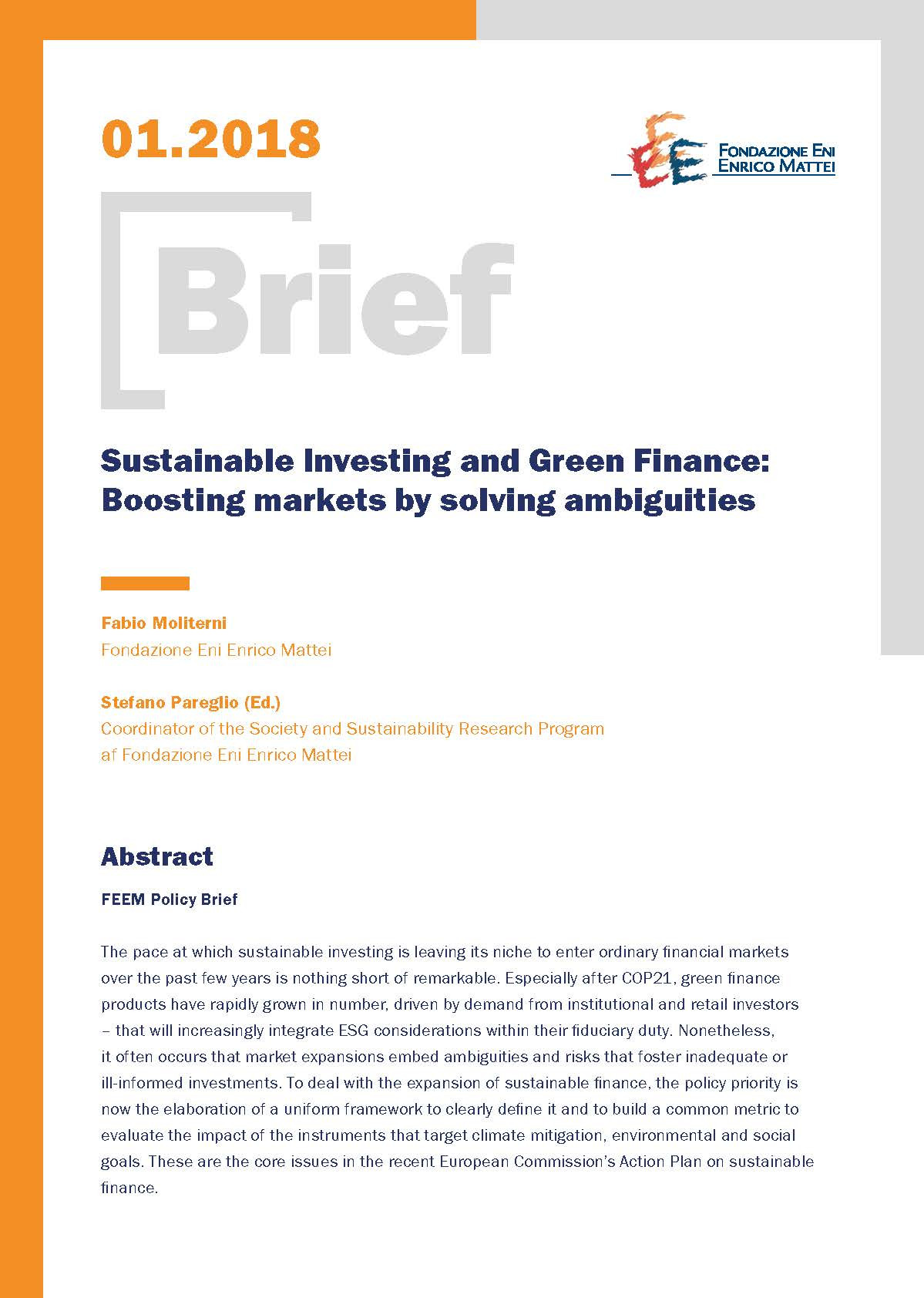Sustainable Investing and Green Finance: Boosting markets by solving ambiguities

19.02.2018
Fabio Moliterni (Fondazione Eni Enrico Mattei); Stefano Pareglio (Fondazione Eni Enrico Mattei)
The pace at which sustainable investing is leaving its niche to enter ordinary financial markets over the past few years is nothing short of remarkable. Especially after COP21, green finance products have rapidly grown in number, driven by demand from institutional and retail investors – that will increasingly integrate ESG considerations within their fiduciary duty. Nonetheless, it often occurs that market expansions embed ambiguities and risks that foster inadequate or ill-informed investments. To deal with the expansion of sustainable finance, the policy priority is now the elaboration of a uniform framework to clearly define it and to build a common metric to evaluate the impact of the instruments that target climate mitigation, environmental and social goals. These are the core issues in the recent European Commission’s Action Plan on sustainable finance.
The pace at which sustainable investing is leaving its niche to enter ordinary financial markets over the past few years is nothing short of remarkable. Especially after COP21, green finance products have rapidly grown in number, driven by demand from institutional and retail investors – that will increasingly integrate ESG considerations within their fiduciary duty. Nonetheless, it often occurs that market expansions embed ambiguities and risks that foster inadequate or ill-informed investments. To deal with the expansion of sustainable finance, the policy priority is now the elaboration of a uniform framework to clearly define it and to build a common metric to evaluate the impact of the instruments that target climate mitigation, environmental and social goals. These are the core issues in the recent European Commission’s Action Plan on sustainable finance.
